Internal Insulation & what's this material? [Pics]
Discussion
Hallo,
I'm in the process of acquiring an older mid terrace with solid external walls. We would like to put up internal insulation on the solid walls. There isn't any evidence of damp, I see Kingspan K17 can be dot & dabbed. What are peoples thoughts on this VS putting up batts? If i went with batts and left a void between the wall & the insulation does this have to be vented some way? I don't see the point of an air gap if it's sealed.
Also, see screengrab below, it looks like there'll be a significant thermal bridge at the interface between the existing house & a cavity walled extension that was built. Is this likely to be a major issue or would it be insignificant because it's so small?
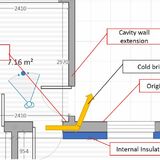
picture A here: whatever finish/render is on it is crumbling at the bottom, but it's dry and powdery and doesn't clump or stain. I'm thinking this suggests the wall doesn't have rising damp? I'm assuming with the age of it there's no DPC.
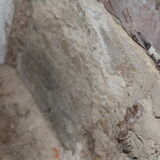
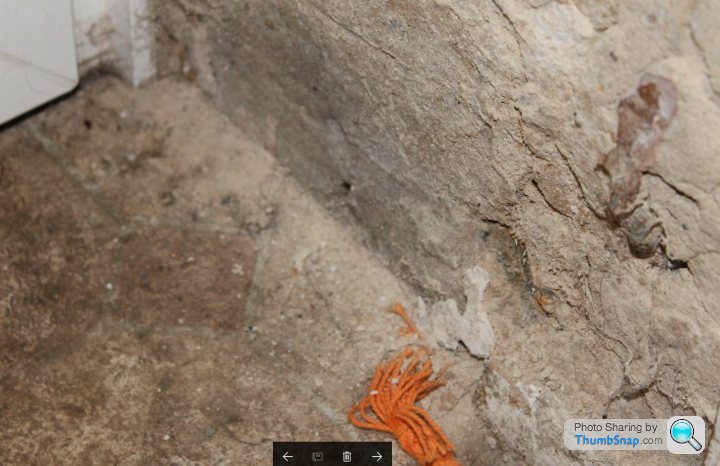
It looks like someone has taken half of a brick out of the neighbor's house for a gander. Same story here; the inside of the brick is quite powdery but it's a dry & dusty rather than sticky / clumpy. I've no idea what a damp brick / render looks or feels like so any thoughts / suggestions welcome.
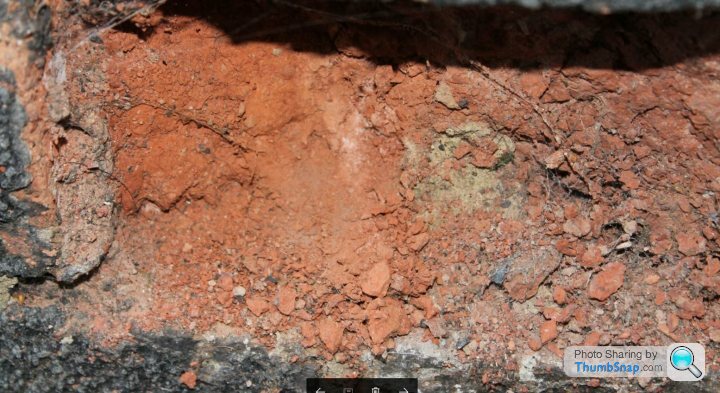
Finally, the walls to the neighboring house are lined with some kind of MDF-ey looking stuff. Looks like the vendor has removed wallpaper and taken the surface of this stuff with him. It's in bad shape, I was thinking we'd replace with plasterboard. Anything weird or wonderful we should know about this stuff before we take it off?
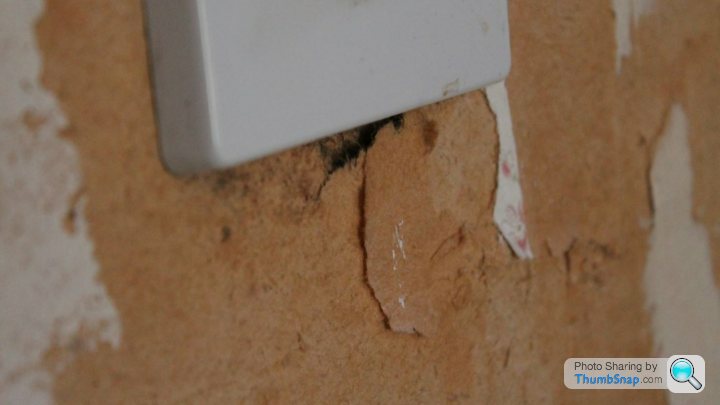 [url]
[url]
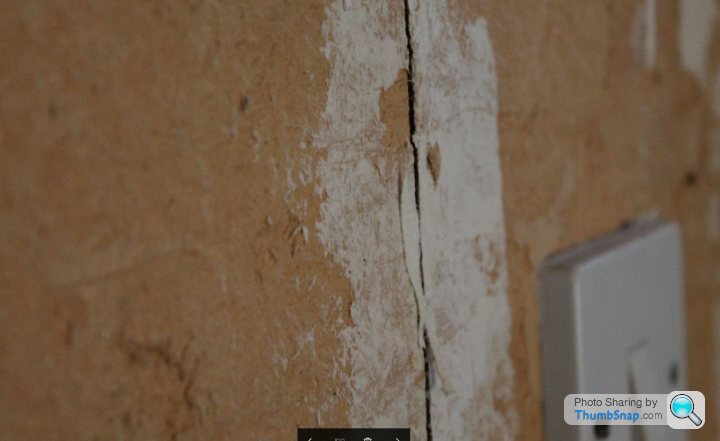 |http://thumbsnap.com/tmxTcb9Z[/url]
|http://thumbsnap.com/tmxTcb9Z[/url]
I'm in the process of acquiring an older mid terrace with solid external walls. We would like to put up internal insulation on the solid walls. There isn't any evidence of damp, I see Kingspan K17 can be dot & dabbed. What are peoples thoughts on this VS putting up batts? If i went with batts and left a void between the wall & the insulation does this have to be vented some way? I don't see the point of an air gap if it's sealed.
Also, see screengrab below, it looks like there'll be a significant thermal bridge at the interface between the existing house & a cavity walled extension that was built. Is this likely to be a major issue or would it be insignificant because it's so small?

picture A here: whatever finish/render is on it is crumbling at the bottom, but it's dry and powdery and doesn't clump or stain. I'm thinking this suggests the wall doesn't have rising damp? I'm assuming with the age of it there's no DPC.


It looks like someone has taken half of a brick out of the neighbor's house for a gander. Same story here; the inside of the brick is quite powdery but it's a dry & dusty rather than sticky / clumpy. I've no idea what a damp brick / render looks or feels like so any thoughts / suggestions welcome.

Finally, the walls to the neighboring house are lined with some kind of MDF-ey looking stuff. Looks like the vendor has removed wallpaper and taken the surface of this stuff with him. It's in bad shape, I was thinking we'd replace with plasterboard. Anything weird or wonderful we should know about this stuff before we take it off?
 [url]
[url] |http://thumbsnap.com/tmxTcb9Z[/url]
|http://thumbsnap.com/tmxTcb9Z[/url]EireEng said:
picture A here: whatever finish/render is on it is crumbling at the bottom, but it's dry and powdery and doesn't clump or stain. I'm thinking this suggests the wall doesn't have rising damp? I'm assuming with the age of it there's no DPC.


That looks like old lime plaster. Assuming someone hasn't been brushing their hair in that spot that's likely horse hair poking out of it. If it's crumbly it suggests to me that there's probably been damp there in the past, possibly from inappropriate wall coverings that have since been removed or changes to external ground levels.

EireEng said:
It looks like someone has taken half of a brick out of the neighbor's house for a gander. Same story here; the inside of the brick is quite powdery but it's a dry & dusty rather than sticky / clumpy. I've no idea what a damp brick / render looks or feels like so any thoughts / suggestions welcome.

If it's currently dry then that's good. A damp brick is quite obviously damp.
If it were my house I'd use cork or wood-wool boards to insulate and stick to a lime plaster finish over the top. If space is an issue then hemp lime plaster is a pretty good insulator. Whilst you won't get quite so high a level of insulation for a given thickness versus Kingspan, modern insulation, plasters and plastic paints aren't good for old buildings and the problems that they cause can be serious and remain hidden for some time. If you end up creating a damp issue the extra benefit from having modern non moisture permeable insulation will rapidly vanish. A dry solid wall is a much better insulator than was assumed to be the case in the past; a damp one is terrible.
Accept that you can't reliably keep moisture out of the fabric of old properties, so you need to make it as easy as possible for excess moisture to make its own way out. On the plus side the building's ability to naturally regulate moisure levels within the house does make for a much healthier environment. Lime plaster also looks so much better imho.
Gassing Station | Homes, Gardens and DIY | Top of Page | What's New | My Stuff



